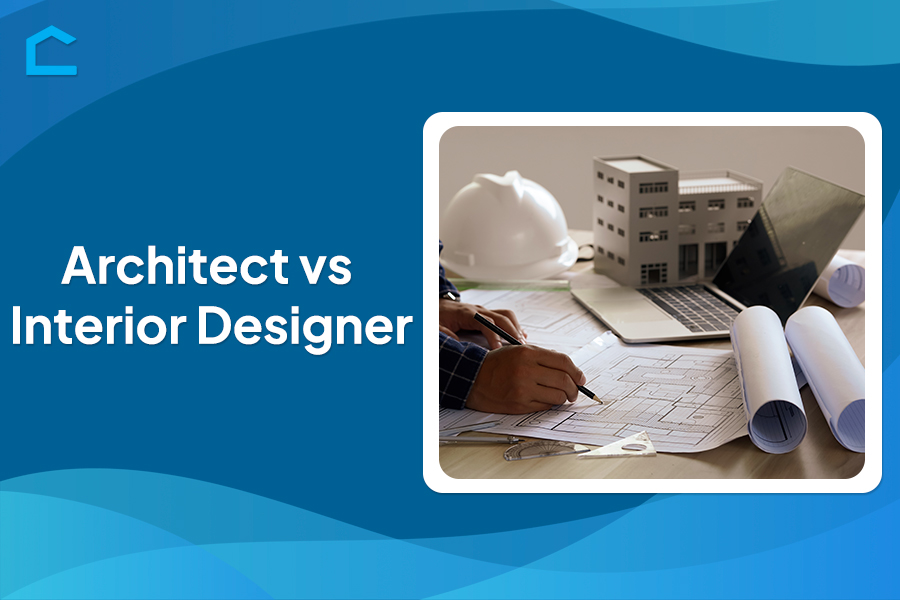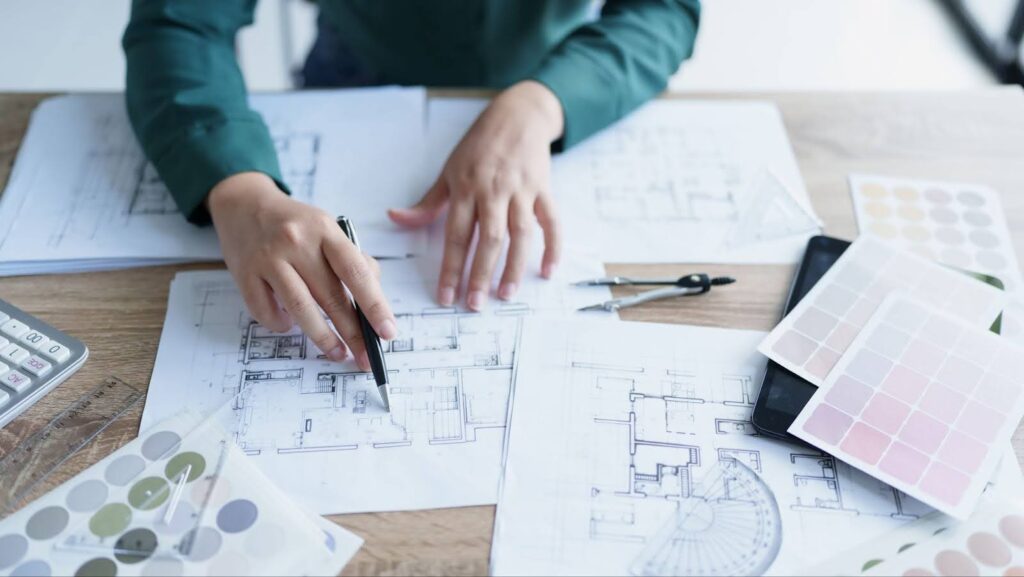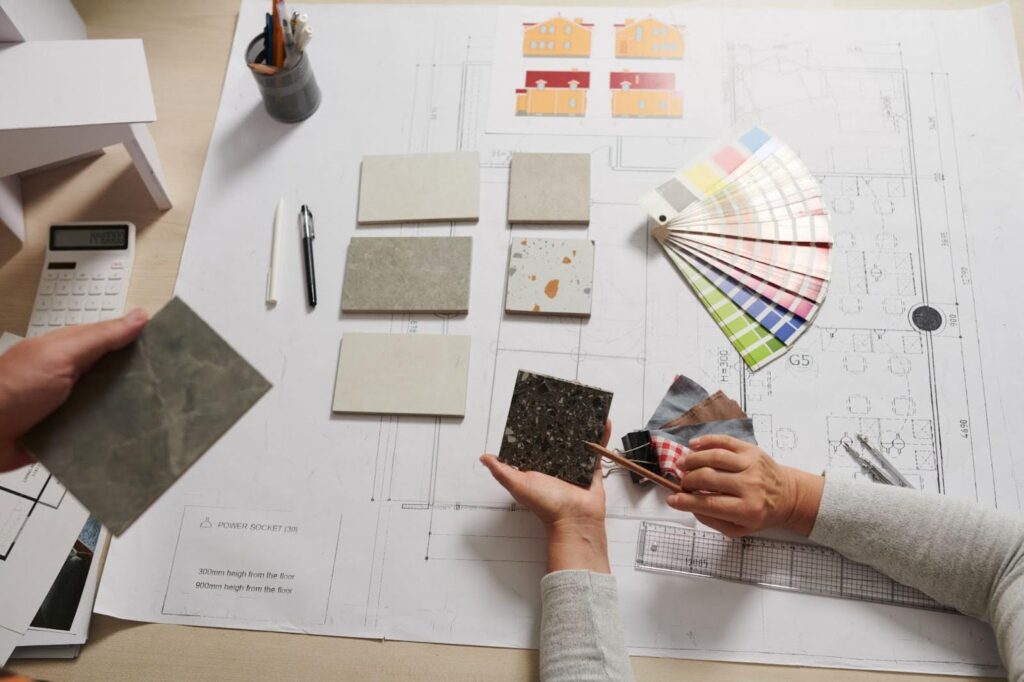Architect vs Interior Designer

Designing and planning out a new construction requires precise calculations and specialized knowledge to ensure the building is durable and efficient. Depending on the project, we’ve noticed that many struggle when deciding between hiring an architect or an interior designer, unsure of their specialty and work-related tasks. That’s why, in this article, we’ll elaborate on the key differences that set an architect vs interior designer apart.
By explaining these two roles, you’ll get a better understanding of their responsibilities and how they contribute to the environment. We’ll highlight each of their key differences and elaborate on the necessary licensing, scope of work, and technologies used. At the end, you’ll get a detailed overview of what architects and interior designers offer so you can choose the position that fits your project’s needs best.
Continue reading to discover the main differences between interior design vs interior architecture and which option suits you best!

Architect vs. Interior Designer
To talk about an architect vs interior designer you need to understand their roles before anything else. Simply put, architects focus on designing buildings and structures, while interior designers enhance the functionality and aesthetics of interior spaces. While both professionals contribute to creating visually pleasing and practical environments, their main focus points differ based on their specialty.
To better understand how to tell these two work positions apart, we’ll take a look at the following key differences:
- Focus and scope of work
- Responsibilities
- Education and licensing
- Design process and collaboration
- Tools and technologies used
- Project types
Focus and scope of work
The first key difference between architects and interior designers is their focus and scope of work. Architects are responsible for the building’s overall structure, from layout to construction. Since their main goal is creating safe and functional constructions compliant with the necessary codes and regulations, they focus on the building’s purpose, structural integrity, and how it integrates with its surroundings. Architects must also shape the overall design and layout that highlight the technical functionality of the building.
On the other hand, interior designers concentrate on decorating and organizing the interior of the property, focusing on space use, furnishings, and materials. They aim to enhance the experience within a specific structure by making its spaces comfortable, practical, and visually appealing. They have to be mindful of the use of each area while also ensuring it’s aesthetically pleasing, interior designers heavily rely on choosing the right colors, lights, and furniture. They focus more on a human-centered design, which balances out the technical functionality architects bring to the table.
Responsibilities
The second key difference between architects and interior designers is their responsibilities. Architects handle the technical aspects of the construction, such as blueprints, zoning, and construction oversight. Since they’re responsible for the overall building safety, they must closely monitor and supervise the construction process, including clear communication with engineers and contractors. Moreover, they must be mindful of the overall budget and safety standards while also integrating various technical systems for electricity and plumbing.
On the other hand, interior designers focus on choosing furniture, colors, and decor that meet the client’s needs and style preferences. They’re often required to work alongside architects to ensure the design is efficient while remaining mindful of the space’s aesthetic and functionality.
Education and licensing
Another key difference that sets interior designers apart from architects is the necessary education and licensing. Since architects are responsible for the safety and durability of the building, they typically require professional degrees in architecture and must pass licensing exams such as the ARE (Architect Registration Examination). Even though there are various state-specific requirements for such professional licensure, most require continuous education to maintain the acquired license.
On the other hand, interior designers often complete design degrees, with certification depending on regional requirements. Since this role holds less responsibility than architects, certification is an optional choice and isn’t required to practice the profession. However, many interior designers aim to pass the NCIDQ (National Council for Interior Design Qualification) exam to further excel in their careers.
Design process and collaboration
Another key aspect used to differentiate architects from interior designers is the design process and collaboration. First, proper architectural design starts with basic conceptual planning and later involves schematic design, design development, and construction documentation. Interior designers come into play once the architectural plans are set in place to work on the aesthetic of the space. Architects work from the initial building design, while interior designers join later to improve interior space functionality and design, collaborating with architects and contractors.

Tools and technologies used
Even though it’s often overlooked, interior designers and architects use different tools and technologies to complete their work-related tasks. Architects use design tools like CAD (Computer-Aided Design) and BIM (Building Information Modeling) to create detailed structural plans, 3D models, and comprehensive blueprints. This software allows them to communicate the necessary mechanical and electrical components throughout the building.
Even though interior designers use similar CAD software, their main use is to design layouts and interiors, highlighting the aesthetics. Since they need to visualize the interior elements by creating room layouts, they turn to design-focused applications to test color schemes and material combinations. Some interior designers may also use VR (virtual reality) technology for a more immersive look into the designed spaces.
Project types
The last key difference that sets interior designers and architects apart is their project types. As expected, architects can work on various types of buildings, including homes and offices, from the beginning of the construction until the end. Since they stay up-to-date with the latest zoning laws and safety regulations, they can also aid in the construction of industrial facilities and public structures.
Interior designers work on creating functional and visually appealing interiors for residential and commercial buildings, including retail stores, hotels, and restaurants. As they’re responsible for setting the ambiance in the space, they often contribute to healthcare and corporate settings. However, they usually join the project once the buildings are deemed safe and functional by previous architectural standards.

Conclusion
After discovering the key differences between an architect vs interior designer, it’s safe to say that even though both professions aim to create functional environments that are visually pleasing, their main focus points differ based on their specialty. Even though architects and interior designers often work alongside each other to achieve optimal results, their scope of work, responsibilities, and tools used depend on the job position. Each role has unique education and licensing qualifications they should meet to successfully contribute to the field.
If you’re looking for the best architects and interior designers who can aid in your next construction project, check out what we at Services Curated have to offer. Through our high-quality verification services, we can connect you with trustworthy and reliable professionals in the field for a safe and transparent collaboration. So, contact us today, and we’ll connect you with the right architects and interior designers for your unique project needs!
